
Advertise on podcast: Emergency Medical Minute
Rating
4.8 from
Country
This podcast has
1033 episodes
Language
Publisher
Explicit
No
Date created
2017/03/01
Average duration
10 min.
Release period
6 days
Description
Our near daily podcasts move quickly to reflect current events, are inspired by real patient care, and speak to the true nature of what it’s like to work in the Emergency Room or Pre-Hospital Setting. Each medical minute is recorded in a real emergency department, by the emergency physician or clinical pharmacist on duty – the ER is our studio and everything is live.
Social media
Check Emergency Medical Minute social media presence
Podcast episodes
Check latest episodes from Emergency Medical Minute podcast
Pharmacy Phriday #11: Riddles, Medical Jargon, NNT, and Time Travel
2024/02/23
Contributors: Kali Olson PharmD, Travis Barlock MD, Jeffrey Olson MS2
Summary:
In this episode of Pharmacy Phriday, Dr. Kali Olson joins Dr. Travis Barlock and Jeffrey Olson in studio to discuss a variety of interesting topics in the form of a segment show. Dr. Kali Olson earned her Doctorate of Pharmacy from the University of Colorado, Skaggs School of Pharmacy and completed a PGY1 residency at Detroit Receiving Hospital and a PGY2 residency in Emergency Medicine at Denver Health. She now works as an Emergency Medicine Pharmacist at Denver Health.
In segment one of the show, Kali and Travis answer the Get-To-Know-You questionnaire. In segment two, they work together to answer a series of pharmacy-based riddles. In segment three they play a “Balderdash” like game in which they guess the definitions of medical jargon. In segment four they play the Number Needed to Treat game, invented by the AFP podcast. And in segment five they work together to answer a question about a far-out scenario involving medications and time travel!
References
· American Family Physician Podcast, https://www.aafp.org/pubs/afp/multimedia/podcast.html
· Gragnolati, A. (2022, May 5). The Yuzpe method of emergency contraception. GoodRx. https://www.goodrx.com/conditions/emergency-contraceptive/yuzpe-method
· Manikandan S, Vani NI. Holiday reading: Learning medicine through riddles. CMAJ. 2010 Dec 14;182(18):E863-4. doi: 10.1503/cmaj.100466. PMID: 21149530; PMCID: PMC3001539.
· Riddle Me This: Mixing Medicine, https://peimpact.com/riddle-me-this-mixing-medicine/
· https://thennt.com/nnt/corticosteroids-treatment-kawasaki-disease-children/
· https://thennt.com/nnt/aspirin-acute-ischemic-stroke/
· https://thennt.com/nnt/tranexamic-acid-treatment-epistaxis/
· https://thennt.com/nnt/antibiotics-culture%e2%80%90positive-asymptomatic-bacteriuria-pregnant-women/
Produced, Hosted, Edited, and Summarized by Jeffrey Olson MS2 | Additional editing by Jorge Chalit, OMSII
more
Episode 891: Hypothermia
2024/02/19
Contributor: Taylor Lynch MD
Educational Pearls
Hypothermia is defined as a core body temperature less than 35 degrees Celsius or less than 95 degrees Fahrenheit
Mild Hypothermia: 32-35 degrees Celsius
Presentation: alert, shivering, tachycardic, and cold diuresis
Management: Passive rewarming i.e. remove wet clothing and cover the patient with blankets or other insulation
Moderate Hypothermia: 28-32 degrees Celsius
Presentation: Drowsiness, lack of shivering, bradycardia, hypotension
Management: Active external rewarming
Severe Hypothermia: 24-28 degrees Celsius
Presentation: Heart block, cardiogenic shock, no shivering
Management: Active external and internal rewarming
Less than 24 degrees Celsius
Presentation: Pulseless, ventricular arrhythmia
Active External Rewarming
Warm fluids are insufficient for warming due to a minimal temperature difference (warmed fluids are maintained at 40 degrees vs. a patient at 30 degrees is not a large enough thermodynamic difference)
External: Bear hugger, warm blankets
Active Internal Rewarming
Thoracic lavage (preferably on the patient’s right side)
Place 2 chest tubes (anteriorly and posteriorly); infuse warm IVF anteriorly and hook up the posterior tube to a Pleur-evac
Warms the patient 3-6 Celsius per hour
Bladder lavage
Continuous bladder irrigation with 3-way foley or 300 cc warm fluid
Less effective than thoracic lavage due to less surface area
Pulseless patients
ACLS does not work until patients are rewarmed to 30 degrees
High-quality CPR until 30 degrees (longest CPR in a hypothermic patient was 6 hours and 30 minutes)
Give epinephrine once you reach 35 degrees, spaced out every 6 minutes
ECMO is the best way to warm these patients up (10 degrees per hour)
Pronouncing death must occur at 32 degrees or must have potassium > 12
References
1. 2005 American Heart Association Guidelines for Cardiopulmonary Resuscitation and Emergency Cardiovascular Care - Part 1: Introduction. Circulation. 2005;112(24 SUPPL.). doi:10.1161/CIRCULATIONAHA.105.166550
2. Brown DJA, Burgger H, Boyd J, Paal P. Accidental Hypothermia. N Engl J Med. 2012;367:1930-1938. doi:10.1136/bmj.2.5543.51-c
3. Dow J, Giesbrecht GG, Danzl DF, et al. Wilderness Medical Society Clinical Practice Guidelines for the Out-of-Hospital Evaluation and Treatment of Accidental Hypothermia: 2019 Update. Wilderness Environ Med. 2019;30(4S):S47-S69. doi:10.1016/j.wem.2019.10.002
4. Kjærgaard B, Bach P. Warming of patients with accidental hypothermia using warm water pleural lavage. Resuscitation. 2006;68(2):203-207. doi:10.1016/j.resuscitation.2005.06.019
5. Lott C, Truhlář A, Alfonzo A, et al. European Resuscitation Council Guidelines 2021: Cardiac arrest in special circumstances. Resuscitation. 2021;161:152-219. doi:10.1016/j.resuscitation.2021.02.011
6. Plaisier BR. Thoracic lavage in accidental hypothermia with cardiac arrest - Report of a case and review of the literature. Resuscitation. 2005;66(1):99-104. doi:10.1016/j.resuscitation.2004.12.024
Summarized by Jorge Chalit, OMSII | Edited by Meg Joyce & Jorge Chalit, OMSII
more
Podcast 890: Outdoor Cold Air for Croup
2024/02/14
Contributor: Jared Scott MD
Educational Pearls:
Croup is a respiratory condition typically caused by a viral infection (e.g., parainfluenza). The disease is characterized by inflammation of the larynx and trachea, which often leads to a distinctive barking cough.
A common treatment for croup is the powerful steroid dexamethasone, but it can take up to 30 minutes to start working.
A folk remedy for croup is to take the afflicted child outside in the cold to help them breathe better, but does it really work?
A 2023 study in Switzerland, published in the Journal of Pediatrics, investigated whether a 30-minute exposure to outdoor cold air could improve mild to moderate croup symptoms before the onset of steroid effects.
The randomized controlled trial included children aged 3 months to 10 years with croup.
After receiving a single-dose oral dexamethasone, participants were exposed to either outdoor cold air or indoor room air. The primary outcome was a decrease in the Westley Croup Score (WCS) by at least 2 points at 30 minutes.
The results indicated that exposure to outdoor cold air, in addition to dexamethasone, significantly reduced symptoms in children with croup, especially in those with moderate cases.
References
Siebert JN, Salomon C, Taddeo I, Gervaix A, Combescure C, Lacroix L. Outdoor Cold Air Versus Room Temperature Exposure for Croup Symptoms: A Randomized Controlled Trial. Pediatrics. 2023 Sep 1;152(3):e2023061365. doi: 10.1542/peds.2023-061365. PMID: 37525974.
Summarized by Jeffrey Olson, MS2 | Edited by Meg Joyce & Jorge Chalit, OMSII
more
Podcast 889: Blood Pressure Cuff Size
2024/02/05
Contributor: Aaron Lessen MD
Educational Pearls:
Does the size of a blood pressure (BP) cuff matter?
A recent randomized crossover trial revealed that, indeed, cuff size can affect blood pressure readings
Design
195 adults with varying mid-upper arm circumferences were randomized to the order of BP cuff application:
Appropriate
Too small
Too large
Individuals had their mid-upper arm circumference measured to determine the appropriate cuff size
Participants underwent 4 sets of triplicate blood pressure measurements, the last of which was always with the appropriately sized cuff
Results
In individuals requiring a small cuff, the use of a regular cuff resulted in blood pressure readings 3.6 mm Hg lower than with the small cuff
In individuals requiring large cuffs, the use of a regular cuff resulted in pressures 4.8 mm Hg higher than with the large cuffs
In individuals requiring extra-large cuffs, the use of a regular cuff resulted in pressures 19.5 mm Hg higher than with extra-large cuffs
Conclusion
Miscuffing results in significantly inaccurate blood pressure measurements
It is important to emphasize individualized BP cuff selection
References
1. Ishigami J, Charleston J, Miller ER, Matsushita K, Appel LJ, Brady TM. Effects of Cuff Size on the Accuracy of Blood Pressure Readings: The Cuff(SZ) Randomized Crossover Trial. JAMA Intern Med. 2023;183(10):1061-1068. doi:10.1001/jamainternmed.2023.3264
Summarized by Jorge Chalit, OMSII | Edited by Jorge Chalit
more
Podcast 888: Low GCS and Intubation
2024/01/29
Contributor: Aaron Lessen MD
Educational Pearls:
Is the adage, “GCS of 8, you’ve got to intubate” accurate? A recent study published in the November 2023 issue of JAMA attempted to answer this question.
Design
Multicenter, randomized trial, in France from 2021 to 2023.
225 patients experiencing comatose in the setting of acute poisoning were randomly assigned to either a conservative airway strategy of withholding intubation or “routine practice” of much more frequent intubation.
The primary outcome was a composite endpoint including in-hospital death, length of intensive care unit stay, and length of hospital stay.
Secondary outcomes included adverse events from intubation and pneumonia within 48 hours.
Results
Results showed that in the intervention group (with intubation withholding), only 16% of patients were intubated, compared to 58% in the control group.
No in-hospital deaths occurred in either group.
The intervention group demonstrated a significant clinical benefit for the primary endpoint, with a win ratio of 1.85 (95% CI, 1.33 to 2.58).
The conservative airway management strategy also saw a statistically significant decrease in adverse events from intubation and pneumonia.
Conclusion
Among comatose patients with suspected acute poisoning, a conservative strategy of withholding intubation was associated with a greater clinical benefit.
This suggests that a judicious approach to intubation is appropriate in many other settings and clinicians should rely on more than the GCS to make this decision.
References
Freund Y, Viglino D, Cachanado M, Cassard C, Montassier E, Douay B, Guenezan J, Le Borgne P, Yordanov Y, Severin A, Roussel M, Daniel M, Marteau A, Peschanski N, Teissandier D, Macrez R, Morere J, Chouihed T, Roux D, Adnet F, Bloom B, Chauvin A, Simon T. Effect of Noninvasive Airway Management of Comatose Patients With Acute Poisoning: A Randomized Clinical Trial. JAMA. 2023 Dec 19;330(23):2267-2274. doi: 10.1001/jama.2023.24391. PMID: 38019968; PMCID: PMC10687712.
Summarized by Jeffrey Olson MS2 | Edited by Meg Joyce & Jorge Chalit, OMSII
more
Podcast 887: Family Presence in Cardiac Resuscitation
2024/01/22
Contributor: Aaron Lessen MD
Educational Pearls:
A 2013 study randomized families of those in cardiac arrest into two groups:
Actively offered patients’ families the opportunity to observe CPR
Follow standard practice regarding family presence (control group)
Of the 266 relatives that received offers to observe CPR, 211 (79%) accepted vs. 43% in the control group observed CPR
The study assessed a primary end-point of PTSD-related symptoms 90 days after the event
Secondary end-points included depression, anxiety, medicolegal claims, medical efforts at resuscitation, and the well-being of the healthcare team
The frequency of PTSD-related symptoms was significantly higher in the control group
Lower rates of anxiety and depression for the families who witnessed CPR
There were no effects on resuscitation efforts, patient survival, medicolegal claims, or stress on the healthcare team
If families choose to witness CPR, it’s beneficial to have someone with the family to explain the process
References
1. Jabre P, Belpomme V, Azoulay E, et al. Family Presence during Cardiopulmonary Resuscitation. N Engl J Med. 2013;368(11):1008-1018. doi:10.1056/NEJMoa1203366
Summarized by Jorge Chalit, OMSII | Edited by Jorge Chalit
more
Podcast 886: Cough in Kids
2024/01/15
Contributor: Ricky Dhaliwal, MD
Educational Pearls:
Croup
Caused by:
Parainfluenza, Adenovirus, RSV, Enterovirus (big right now)
Age range:
6 months to 3 years
Symptoms:
Barky cough
Inspiratory stridor (Severe = stidor at rest)
Use the Westley Croup Score to gauge the severity
Treatment:
High flow, humidified, cool oxygen
Dexamethasone 0.6 mg/kg oral, max 16mg
Severe: Racemic Epinephrine 0.5 mL/kg
Consider heliox, a mixture of helium and oxygen
Very severe: be ready to intubate
Bronchiolitis
Caused by:
RSV, Rhinovirus
Symptoms are driven by secretions
Symptoms:
Cough
Wheezing
Dehydration (often the symptom that makes them look the worst)
Age range:
2 to 6 months
Treatment:
Suctioning
Oxygen
IV fluids
Nebulized hypertonic saline
DuoNebs? No.
Asthma
Caused by:
Environmental factors
Viral illness with a predisposition
Treatment:
Beta agonists
Steroids
Ipratropium
Magnesium (relaxes smooth muscle)
References
Dalziel SR, Haskell L, O'Brien S, Borland ML, Plint AC, Babl FE, Oakley E. Bronchiolitis. Lancet. 2022 Jul 30;400(10349):392-406. doi: 10.1016/S0140-6736(22)01016-9. Epub 2022 Jul 1. PMID: 35785792.
Hoch HE, Houin PR, Stillwell PC. Asthma in Children: A Brief Review for Primary Care Providers. Pediatr Ann. 2019 Mar 1;48(3):e103-e109. doi: 10.3928/19382359-20190219-01. PMID: 30874817.
Midulla F, Petrarca L, Frassanito A, Di Mattia G, Zicari AM, Nenna R. Bronchiolitis clinics and medical treatment. Minerva Pediatr. 2018 Dec;70(6):600-611. doi: 10.23736/S0026-4946.18.05334-3. Epub 2018 Oct 18. PMID: 30334624.
Smith DK, McDermott AJ, Sullivan JF. Croup: Diagnosis and Management. Am Fam Physician. 2018 May 1;97(9):575-580. PMID: 29763253.
Westley CR, Cotton EK, Brooks JG. Nebulized racemic epinephrine by IPPB for the treatment of croup: a double-blind study. Am J Dis Child. 1978 May;132(5):484-7. doi: 10.1001/archpedi.1978.02120300044008. PMID: 347921.
https://www.mdcalc.com/calc/677/westley-croup-score
Summarized by Jeffrey Olson | Edited by Meg Joyce & Jorge Chalit, OMSII
more
Podcast 885: Penetrating Neck Injuries
2024/01/10
Contributor: Ricky Dhaliwal MD
Educational Pearls:
Three zones of the neck with different structures and risks for injuries:
Zone 1 is the most caudal region from the clavicle to the cricoid cartilage
Zone 2 is from the cricoid cartilage to the angle of the mandible
Zone 3 is superior to the angle of the mandible
Zone 1 contains the thoracic outlet vasculature (subclavian arteries and veins, internal jugular veins), carotid arteries, vertebral artery, apices of the lungs, trachea, esophagus, spinal cord, thoracic duct, thyroid gland, jugular veins, and the vagus nerve.
Zone 2 contains the common carotid arteries, internal and external branches of carotid arteries, vertebral arteries, jugular veins, trachea, esophagus, larynx, pharynx, spinal cord, and vagus and recurrent laryngeal nerves
Lower risk than Zone 1 or Zone 3
Zone 3 contains the distal carotid arteries, vertebral arteries, jugular veins, pharynx, spinal cord, cranial nerves IX, X, XI, XII, the sympathetic chain, and the salivary and parotid glands
Hard signs that indicate direct transfer to OR:
Airway compromise
Active, brisk bleeding
Pulsatile hematomas
Hematemesis
Massive subcutaneous emphysema
Soft signs that may obtain imaging to determine further interventions:
Hemoptysis
Oropharyngeal bleeding
Dysphagia
Dysphonia
Expanding hematomas
Soft sign management includes ABCs, type & screen, and airway interventions followed by imaging of the head & neck area
Patients with dysphonia or dysphagia with subsequent negative CTAs may get further work-up via swallow studies
References
Asensio JA, Chahwan S, Forno W, et al. Penetrating esophageal injuries: multicenter study of the American Association for the Surgery of Trauma. J Trauma. 2001;50(2):289-296. doi:10.1097/00005373-200102000-00015
Azuaje RE, Jacobson LE, Glover J, et al. Reliability of physical examination as a predictor of vascular injury after penetrating neck trauma. Am Surg. 2003;69(9):804-807.
Ibraheem K, Wong S, Smith A, et al. Computed tomography angiography in the "no-zone" approach era for penetrating neck trauma: A systematic review. J Trauma Acute Care Surg. 2020;89(6):1233-1238. doi:10.1097/TA.0000000000002919
Nowicki JL, Stew B, Ooi E. Penetrating neck injuries: A guide to evaluation and managementx. Ann R Coll Surg Engl. 2018;100(1):6-11. doi:10.1308/rcsann.2017.0191
Summarized by Jorge Chalit, OMSII | Edited by Meg Joyce & Jorge Chalit, OMSII
more
Laboring Under Pressure Episode 2: Postpartum Hemorrhage with Dr. Kiersten Williams
2024/01/08
Contributor: Kiersten Williams MD, Travis Barlock MD, Jeffrey Olson MS2
Summary:
In this episode, Dr. Travis Barlock and Jeffrey Olson meet in the studio to discuss a clip from Dr. Williams’ talk at the “Laboring Under Pressure, Managing Obstetric Emergencies in a Global Setting” event from May 2023. This event was hosted at the University of Denver and was organized with the help of Joe Parker as a fundraiser for the organization Health Outreach Latin America (HOLA).
Dr. Kiersten Williams completed her OBGYN residency at Bay State Medical Center and practices as an Obstetric Hospitalist at Presbyterian/St. Luke’s Medical Center in Denver, Colorado.
During her talk, Dr. Williams walks the audience through the common causes and treatments for post-partum hemorrhage (PPH).
Some important take-away points from this talk are:
The most common causes of PPH can be remembered by the 4 T’s. Tone (atony), Trauma, Tissue (retained placenta), and Thrombin (coagulopathies).
AV malformations of the uterus are probably underdiagnosed.
Quantitative blood loss is much more accurate than estimated blood loss (EBL).
The ideal fibrinogen for an obstetric patient about to deliver is above 400 mg/dl - under 200 is certain to cause bleeding.
Do not deliver oxytocin via IV push dose, it can cause significant hypotension.
Tranexamic Acid is available in both IV and PO and can be administered in the field. The dose is 1 gram and can be run over 10 minutes if administered via IV. It is best if used within 3 hours of delivery.
When performing a uterine massage, place one hand inside the vagina and one hand on the lower abdomen. Then rub the lower abdomen like mad.
A new option for treating PPH is called the JADA System which is slimmer than a Bakri Balloon and uses vacuum suction to help the uterus clamp down.*
Another option for a small uterus is to insert a 60 cc Foley catheter.
In an operating room, a B-Lynch suture can be put in place, uterine artery ligation can be performed, and as a last resort, a hysterectomy can be done.
*EMM is not sponsored by JADA system or the Bakri balloon.
References
Andrikopoulou M, D'Alton ME. Postpartum hemorrhage: early identification challenges. Semin Perinatol. 2019 Feb;43(1):11-17. doi: 10.1053/j.semperi.2018.11.003. Epub 2018 Nov 14. PMID: 30503400.
Committee on Practice Bulletins-Obstetrics. Practice Bulletin No. 183: Postpartum Hemorrhage. Obstet Gynecol. 2017 Oct;130(4):e168-e186. doi: 10.1097/AOG.0000000000002351. PMID: 28937571.
Federspiel JJ, Eke AC, Eppes CS. Postpartum hemorrhage protocols and benchmarks: improving care through standardization. Am J Obstet Gynecol MFM. 2023 Feb;5(2S):100740. doi: 10.1016/j.ajogmf.2022.100740. Epub 2022 Sep 2. PMID: 36058518; PMCID: PMC9941009.
Health Outreach for Latin America Foundation - HOLA Foundation. (n.d.). http://www.hola-foundation.org/
Kumaraswami S, Butwick A. Latest advances in postpartum hemorrhage management. Best Pract Res Clin Anaesthesiol. 2022 May;36(1):123-134. doi: 10.1016/j.bpa.2022.02.004. Epub 2022 Feb 24. PMID: 35659949.
Pacheco LD, Saade GR, Hankins GDV. Medical management of postpartum hemorrhage: An update. Semin Perinatol. 2019 Feb;43(1):22-26. doi: 10.1053/j.semperi.2018.11.005. Epub 2018 Nov 14. PMID: 30503399.
Produced by Jeffrey Olson, MS2 | Edited by Jeffrey Olson and Jorge Chalit, OMSII
more
Podcast 884: Nerve Blocks
2024/01/01
Contributor: Meghan Hurley MD
Educational Pearls:
What is a nerve block?
A nerve block is the medical procedure of injecting anesthetic into the area around a nerve to block pain signals.
They are typically done with ultrasound guidance.
Are nerve blocks effective?
Most of the information we have about nerve blocks is extrapolated from fascia iliaca blocks. This nerve block targets the fascia iliaca compartment, which contains the femoral, lateral femoral cutaneous, and obturator nerves. These blocks are commonly done for hip fractures to help stabilize the patient while awaiting surgical repair.
The data for these types of injections is strong. They decrease pain, they decrease total morphine equivalents needed while a patient is in the hospital, they help mobilize patients earlier and start physical therapy earlier, and they help patients leave the hospital about a day earlier.
What is an example of an agent that can be used?
Bupivacaine. A long acting amide-type local anesthetic. It works best when paired with epinephrine which causes local vasoconstriction and allows the bupivaciaine to bathe the nerve for longer. It gives 5-15 hours of anesthesia (complete sensation loss), and up to 30 hours of analgesia (pain loss).
What’s an example of another block that can be done?
An Erector Spinae Plane (ESP) block is performed in the paraspinal fascial plane in the back. This can be used for pain around the ribs and before a variety of medical procedures including a Nuss procedure, thoracotomies, percutaneous nephrolithotomies, ventral hernia repairs, and even lumbar fusions.
What is one potential complication of a nerve block?
Local Anesthetic Systemic Toxicity (LAST).
There are three ways this can happen:
1) Using too much total anesthetic (Maximum dose of bupivacaine is 2.5 mg/kg).
2) Too much anesthetic is injected into a confined space which then gets absorbed into the venous system.
3) Injecting directly into the vasculature by mistake.
What are the signs that this complication has occurred?
Perioral tingling
Stupor
Coma
Seizures
What can that cause?
Cardiovascular collapse
How is that treated?
Intralipid AKA Soybean Oil, or “lipid emulsion” should be given as a bolus followed by a drip. These patients need to be admitted.
Bolus 1.5 ml/kg (lean body mass) intravenously over 1 min (max ~100 ml).
Continuous infusion at 0.25 mL/kg/min. Max dosing in the first 30 minutes is around 100 ml/kg.
Fun fact: Patients being treated for LAST with intralipid cannot undergo general anesthesia because the intralipid will impact the anesthesia drugs.
References
Long B, Chavez S, Gottlieb M, Montrief T, Brady WJ. Local anesthetic systemic toxicity: A narrative review for emergency clinicians. Am J Emerg Med. 2022 Sep;59:42-48. doi: 10.1016/j.ajem.2022.06.017. Epub 2022 Jun 13. PMID: 35777259.
Carvalho Júnior LH, Temponi EF, Paganini VO, Costa LP, Soares LF, Gonçalves MB. Reducing the length of hospital stay after total knee arthroplasty: influence of femoral and sciatic nerve block. Rev Assoc Med Bras (1992). 2015 Jan-Feb;61(1):40-3. doi: 10.1590/1806-9282.61.01.040. Epub 2015 Jan 1. PMID: 25909207.
Jain N, Kotulski C, Al-Hilli A, Yeung-Lai-Wah P, Pluta J, Heegeman D. Fascia Iliaca Block in Hip and Femur Fractures to Reduce Opioid Use. J Emerg Med. 2022 Jul;63(1):1-9. doi: 10.1016/j.jemermed.2022.04.018. Epub 2022 Aug 4. PMID: 35933265.
Kot P, Rodriguez P, Granell M, Cano B, Rovira L, Morales J, Broseta A, Andrés J. The erector spinae plane block: a narrative review. Korean J Anesthesiol. 2019 Jun;72(3):209-220. doi: 10.4097/kja.d.19.00012. Epub 2019 Mar 19. PMID: 30886130; PMCID: PMC6547235.
Lee SH, Sohn JT. Mechanisms underlying lipid emulsion resuscitation for drug toxicity: a narrative review. Korean J Anesthesiol. 2023 Jun;76(3):171-182. doi: 10.4097/kja.23031. Epub 2023 Jan 26. PMID: 36704816; PMCID: PMC10244607.
We
more
Podcast 883: Migraine Treatment in Cardiovascular Disease
2023/12/25
Contributor: Jorge Chalit, OMS II
Educational Pearls:
Migraine pathophysiology
Primarily mediated through the trigeminovascular system
Serotonin, dopamine, and calcitonin gene-related peptide (CGRP)
Trigeminovascular system is linked to the trigeminal nucleus caudalis, which relays pain to the hypothalamus and cerebral cortex
One effective treatment for acute migraines is -triptan medications
5-HT1D/1B agonists such as sumatriptan
Often combined with NSAIDs and dopamine antagonists (as antiemetics) in migraine cocktails
Diphenhydramine (Benadryl) was shown to be ineffective in a randomized controlled trial comparing it with placebo and a dopamine antagonist antiemetic.
The -triptan medications carry significant risk for peripheral vasoconstriction and are therefore avoided in cardiovascular disease
One serotonin agonist specifically approved for use in vascular disease
Lasmiditan - 5-HT1F agonist
Slightly different mechanism of action avoids peripheral vasoconstriction
CGRP antagonists are also used in patients who are unresponsive to -triptans
References
1. Friedman WB, Cabral L, Adewunmi V, et al. Diphenhydramine as adjuvant therapy for acute migraine. An ED-based randomized clinical trial. Ann Emerg Med. 2016;67(1):32-39.e3. doi:doi:10.1016/j.annemergmed.2015.07.495
2. Lasmiditan (Reyvow) and ubrogepant (Ubrelvy) for acute treatment of migraine. (2020). The Medical letter on drugs and therapeutics, 62(1593), 35–39.
3. Robbins MS. Diagnosis and Management of Headache: A Review. JAMA - J Am Med Assoc. 2021;325(18):1874-1885. doi:10.1001/jama.2021.1640
4. Vanderpluym JH, Halker Singh RB, Urtecho M, et al. Acute Treatments for Episodic Migraine in Adults: A Systematic Review and Meta-analysis. JAMA - J Am Med Assoc. 2021;325(23):2357-2369. doi:10.1001/jama.2021.7939
Summarized by Jorge Chalit, OMSII | Edited by Meg Joyce & Jorge Chalit, OMSII
more
Podcast 882: Thrombolytics for Minor Strokes
2023/12/20
Contributor: Aaron Lessen MD
Educational Pearls:
How is the severity of a stroke assessed?
Strokes are assessed by the NIH Stroke Scale (NIHSS), this scale has different tasks, such as asking the person to repeat words, move their arms, or follow simple instructions. The maximum score is 42 but any score over 21 is considered severe.
What would qualify as a minor storke?
NIH This could be achieved with minor symptoms such as numbness
Should patients with minor strokes be given thrombolytics?
A new study in JAMA published in June of 2023 sought to answer this question.
This study compares the effectiveness of dual antiplatelet therapy (DAPT) with intravenous thrombolysis in patients with minor non-disabling acute ischemic stroke.
The research involved 760 participants in China, and the primary measure was an excellent functional outcome at 90 days.
The results showed that DAPT was non-inferior to intravenous alteplase, with 93.8% of patients in the DAPT group and 91.4% in the alteplase group achieving an excellent functional outcome.
The study suggests that DAPT could be a viable alternative to intravenous thrombolysis for patients with minor non-disabling strokes within 4.5 hours of symptom onset.
Additionally, the incidence of symptomatic intracerebral hemorrhage was low in both groups.
References
1. Chen HS, Cui Y, Zhou ZH, Zhang H, Wang LX, Wang WZ, Shen LY, Guo LY, Wang EQ, Wang RX, Han J, Dong YL, Li J, Lin YZ, Yang QC, Zhang L, Li JY, Wang J, Xia L, Ma GB, Lu J, Jiang CH, Huang SM, Wan LS, Piao XY, Li Z, Li YS, Yang KH, Wang DL, Nguyen TN; ARAMIS Investigators. Dual Antiplatelet Therapy vs Alteplase for Patients With Minor Nondisabling Acute Ischemic Stroke: The ARAMIS Randomized Clinical Trial. JAMA. 2023 Jun 27;329(24):2135-2144. doi: 10.1001/jama.2023.7827. PMID: 37367978; PMCID: PMC10300686.
Summarized by Jeffrey Olson, MS2 | Edited by Meg Joyce & Jorge Chalit, OMSII
more
Podcast reviews
Read Emergency Medical Minute podcast reviews
ggarcia.ur
2024/02/05
Fantastic podcast
The information provided is fantastic for medical/emergency providers. I enjoy the briefness of each episode. Will continue listening!
hnhhk
2023/05/11
review
As someone who is passionate about the topic, I was overjoyed to discover a podcast that not only offers insightful information, but also does so in a...
more
Ryan Novoa
2023/06/01
A bit dense
There is likely a lot of good vocabulary that would be useful in medicine, but these terms are not given much context. One would have to be a medical ...
more
Yuli Ibarra
2023/04/27
Nice podcast
I got to listen to the episode about fentanyl because I’ve been hearing more about it in the news. I learned that there is a lot more money in the fen...
more
ValBax13
2022/10/04
Efficient, effective EMM “Quickie” Podcasts
If you’re looking for a reliable, updated evidence-based EMM topic review lecture podcast with only a handful of minutes to listen to, then look no fu...
more
Zach.EMT
2022/08/22
EMM
The best Emergency medicine podcast out for amazing medical education
Levi Pannell
2022/08/04
Fits a lot of information in such a short amount of time.
I really like just how much they can fit into a 3 min time slot. They cover case studies, alternative treatments, new finding, etc in such a small win...
more
MDRLee
2022/07/25
Precious Pearls
I’ve an ER nurse for over 30 years… I pick up several bits of information that are so valuable to nursing practice; especially in critical care! Thes...
more
Diana Salha
2022/05/27
Amazing podcast
I want to start off by saying that this podcast was extremely interesting and helpful to listen to. After listening to this podcast, I believe that I ...
more
qrjeanty
2022/04/17
Great episode
This was really interesting.
Podcast sponsorship advertising
Start advertising on Emergency Medical Minute & sponsor relevant audience podcasts
You may also like these medicine Podcasts

4.9
775
227
EM Clerkship
Zack Olson, MD and Michael Estephan, MD

4.8
20
87
Out of the Gray (Gy) - Standard Imaging
Traci Conley, Matthew Payne

4.9
82
116
I AM BIO
Biotechnology Innovation Organization

4.8
440
100
The Plant Path
with Sajah & Whitney Popham, founders of The School of Evolutionary Herbalism. Herbalist, Spagyricist, Medical Astrologer
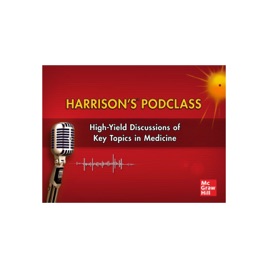
4.7
293
119
Harrison's PodClass: Internal Medicine Cases and Board Prep
AccessMedicine

4.8
71
169
JOSPT Insights
JOSPT
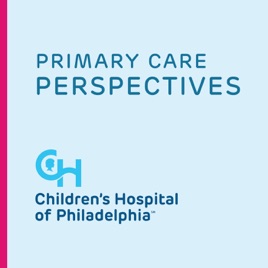
4.7
107
163
Primary Care Perspectives
Children’s Hospital of Philadelphia
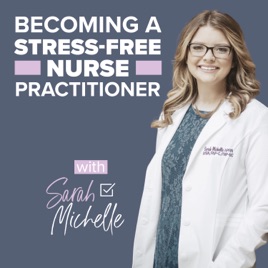
4.9
303
108
Becoming A Stress-Free Nurse Practitioner
Sarah Michelle
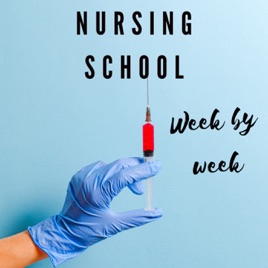
4.7
231
36
Nursing School Week by Week
Melanie
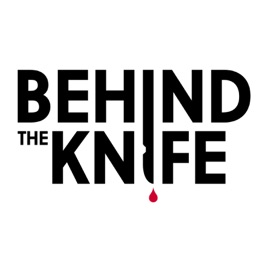
4.8
1267
500
Behind The Knife: The Surgery Podcast
Behind The Knife: The Surgery Podcast



